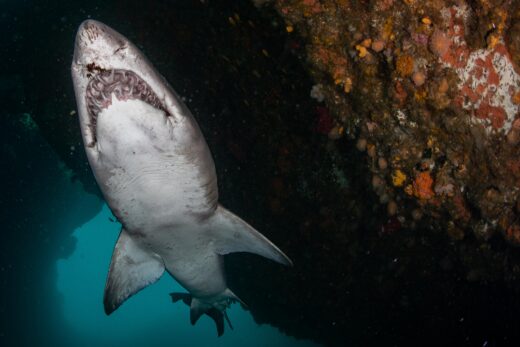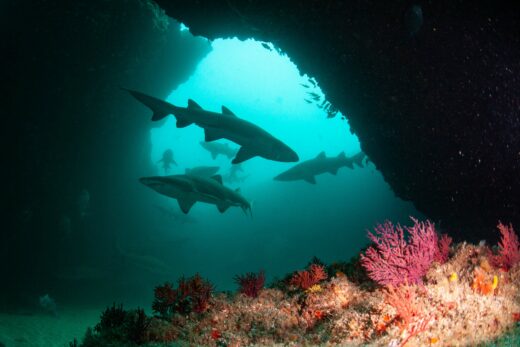Ragged tooth sharks friend not foe, says Umdloti shark expert
Despite their intimidating appearance, 'raggies' are not aggressive predators.

Ferocious-looking teeth and cannibalistic behaviour inside the uterus have made ragged tooth sharks to be perceived as vicious predators.
However, Oceanographic Research Institute’s (ORI) Dr Ryan Daly, an Umdloti resident and marine biologist specialising in sharks, says “raggies” are actually very chilled small fish eaters, not at all interested in or designed to catch big species.
Daly has been researching the sharks that patrol our coastline for the past 15 years.
While great white sharks have triangular serrated teeth designed for biting through big species like dolphins, raggies have thin, sharp, ragged teeth purpose-built to shred small fish to pieces.

Explaining their trademark cannibalistic in utero behaviour, Daly says adult females have two uteri and give birth to two pups every two years. Being ovoviviparous, like some snake species, females produce eggs inside each uterus that hatch inside their body.
Now, this is where it gets interesting. The biggest embryo that hatched first in each uterus devours its other developing embryo siblings as a source of nutrients. Consequently, pups are born about one metre in length and ready to roll.
Easily identifiable by their bulky bodies, pointy snouts, two similar-sized dorsal fins, dagger-like teeth, and small eyes, raggies seen along the KZN north coast are mostly thought to be migrating pregnant females.
Raggies favour shallow (10-16 metres deep) prominent structures and caves where they relax during the day, resting up for the nocturnal hunt.
They gather to mate in early summer (October/November) at prominent reefs between the Transkei and Aliwal Shoal before pregnant females head north in late summer (January to April) to the warm waters and shallow reefs of Zululand and southern Mozambique to gestate.

“Raggie Reef at Leven Point at iSimangaliso and Quarter Mile at Sodwana Bay are well-known and protected aggregation points for gestating females,” says Daly.
At the end of summer the females migrate back down the coast to pup, predominantly between East London and St Francis Bay.
Despite being well studied in South Africa, a lot remains unknown about these giants of the deep.

“We still don’t really know where the adult males go outside of the mating season. With recent deep camera drops we have discovered male raggies at new places at depths of about 80 metres.”
He said they also did not yet know what the male raggies got up to in the deep reefs but he was excited to find out through continued research.
Stay in the loop with The North Coast Courier on Facebook, X, Instagram & YouTube for the latest news.
Mobile users can join our WhatsApp Broadcast Service here or if you’re on desktop, scan the QR code below.


